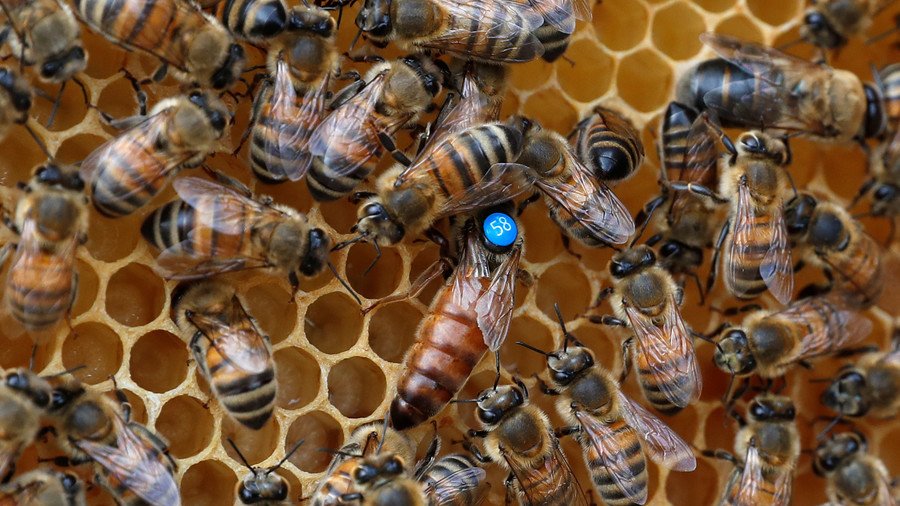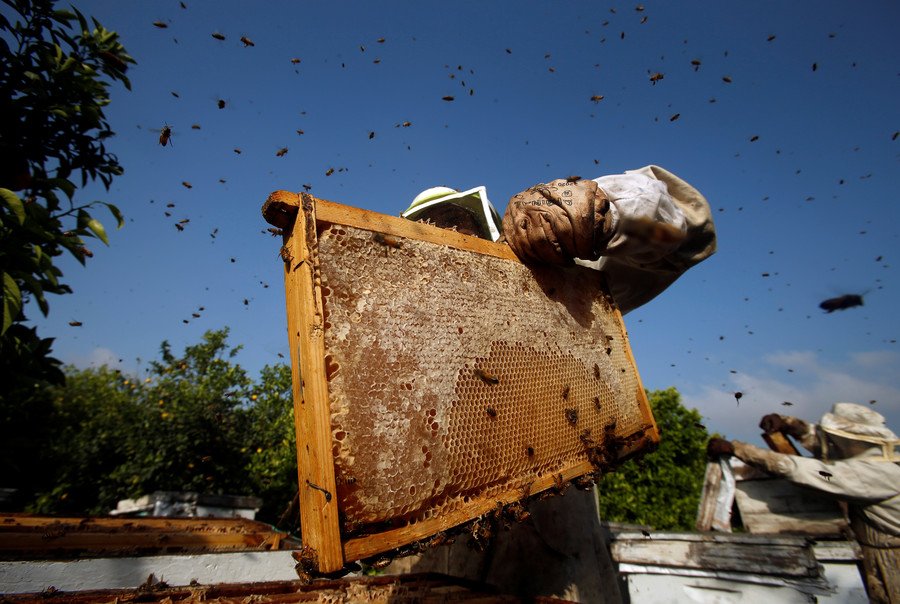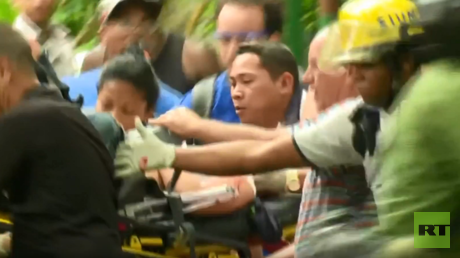Bee gone: Scientists turn to technology as declining bee numbers threaten global food security

The devastating consequences of our declining bee population are being highlighted on the first ever ‘Bee Day.’ Around 80 percent of crops are pollinated by insects. RT asks if there are any alternatives to secure our food future.
According to Greenpeace, some 40 percent of commercial honeybees have been lost across the US since 2006. The decline is attributed to a rise in colony collapse disorder (CCD), a phenomenon that occurs when the majority of a colony’s worker bees suddenly disappear. The cause is unknown, although some experts offer various explanations ranging from infections, increased urbanisation, the loss of habitat, and the widespread use of pesticides.
READ MORE: 2 boys arrested for vandalism that killed 500k bees
Whatever the reason, insect pollination directly contributes to the production of a huge portion of the world’s food supply, so the dramatic decline of the honeybee should be a warning: either we get to the root of the problem or develop a technological alternative capable of performing the same function.
But is a technological solution even viable?
Research into robotic replacements for bees is being spearheaded by Eijiro Miyako at Japan’s National Institute of Advanced Industrial Science and Technology. A manually controlled drone, the device is around four centimeters wide and is covered in horse hair treated with a gel designed to collect pollen.
Miyako hopes the team can one day develop a drone capable of using artificial intelligence to independently identify flowers and track their flight between them. Already, the drones have shown themselves capable of cross-pollinating Japanese lilies without damaging their brittle petals or stems. “We hope this will help to counter the problem of bee declines,” Miyako told New Scientist. “Importantly, bees and drones should be used together.”
In March, US retail giant Walmart filed a patent for robotic bees that it hopes will be able to pollinate crops like their real-life counterparts. Although the company’s plans for the robotic-swarm patent are unclear, some experts believe the retail giant is moving further into the agriculture market.
READ MORE: Robot bees: Walmart plots global pollination (IMAGE)
And if the robo-bees fail?
Another option for alleviating the threat of disappearing bees is a method known as pollen dusting, in which pollen is sprayed over fields from aircraft passing overhead. According to a study from MIT, pollen dusting is effective for some crops but produces lower yields of fruit than natural pollination.
There is, too, the option of painstakingly going from plant to plant with a brush dipped in pollen, painting each petal by hand. In Hanyuan, a mountainous region of China’s southwestern Sichuan Province, pears have been grown using hand-pollination techniques since the early 1980s. The tradition started after local beekeepers refused to rent out their bees for natural pollination after they learned insecticides were being used to kill mites in the trees.
READ MORE: Hiveway robbery: Enormous 'angry' swarm may descend on UK after million-bee heist
That sounds costly...
None of these solutions are economically viable. The MIT study estimates that it can take 120 days for one person to pollinate a hectare by hand. In the US alone, there are around 153,000 hectares of apple orchards, meaning that the total cost of hand-dusting all available land would be more than $876 million – an eye-watering amount, particularly when you consider that it would cost nothing if bees are kept alive.
According to a separate environmental study, the global economic benefit of natural pollination amounts to some €265 billion. However, the figure hides its “real” value as a viable alternative has not yet been developed, meaning that if natural pollination were to suddenly end, it might never be replaced – effectively making natural pollination priceless.
READ MORE: ‘Exploding’ ants discovered: Kamikaze insects kill predators with toxic… well, selves

So what do we do – starve to death?
Even the inventors of the robotic bee are skeptical that it can ever truly act as a honeybee substitute. The easiest thing would be to save the honeybee in the first place. According to the New York Bee Sanctuary, the best way to do that is to ban all pesticides, fungicides and herbicides from your garden, refrain from weeding, buy local honey to support bee farmers and plant bee-friendly plants.
Think your friends would be interested? Share this story!














